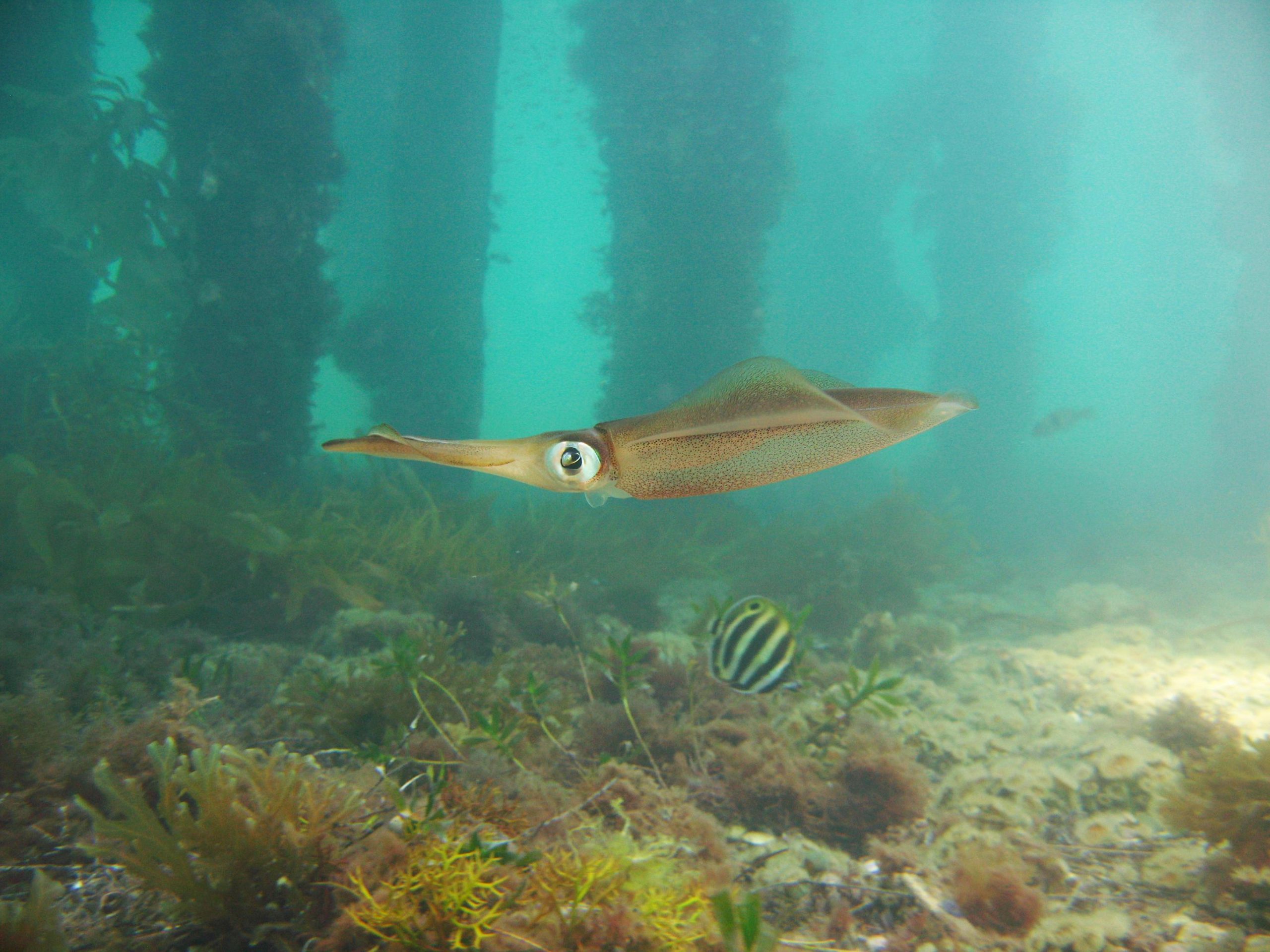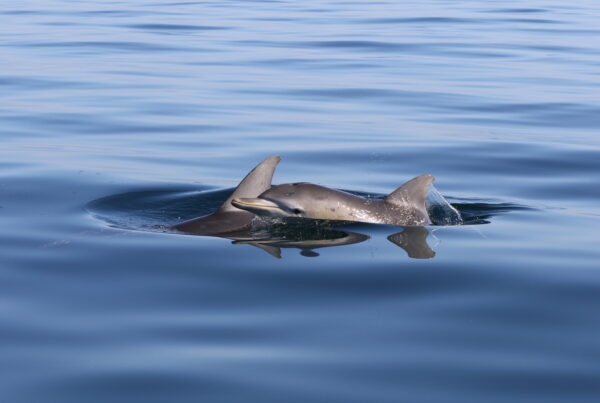How can you tell the difference between between squid and calamari? Is there a difference? Does it matter? Ask experienced divers about what’s looking at them under water…
All divers know the importance of having a buddy to keep an eye out for them, but how about if that eye was the size of a volleyball? That would happen if the giant squid was your dive-buddy; this creature (along with its cousin, the colossal squid) has the largest eye in the world – even bigger than the blue whale’s eye. The giant squid’s eye is up to 25cm in diameter, and this massive size allows the squid to detect the presence of objects in the depths of their deep-sea world. (The photos here are of (not enormous) squid found in Western Port and Port Phillip).
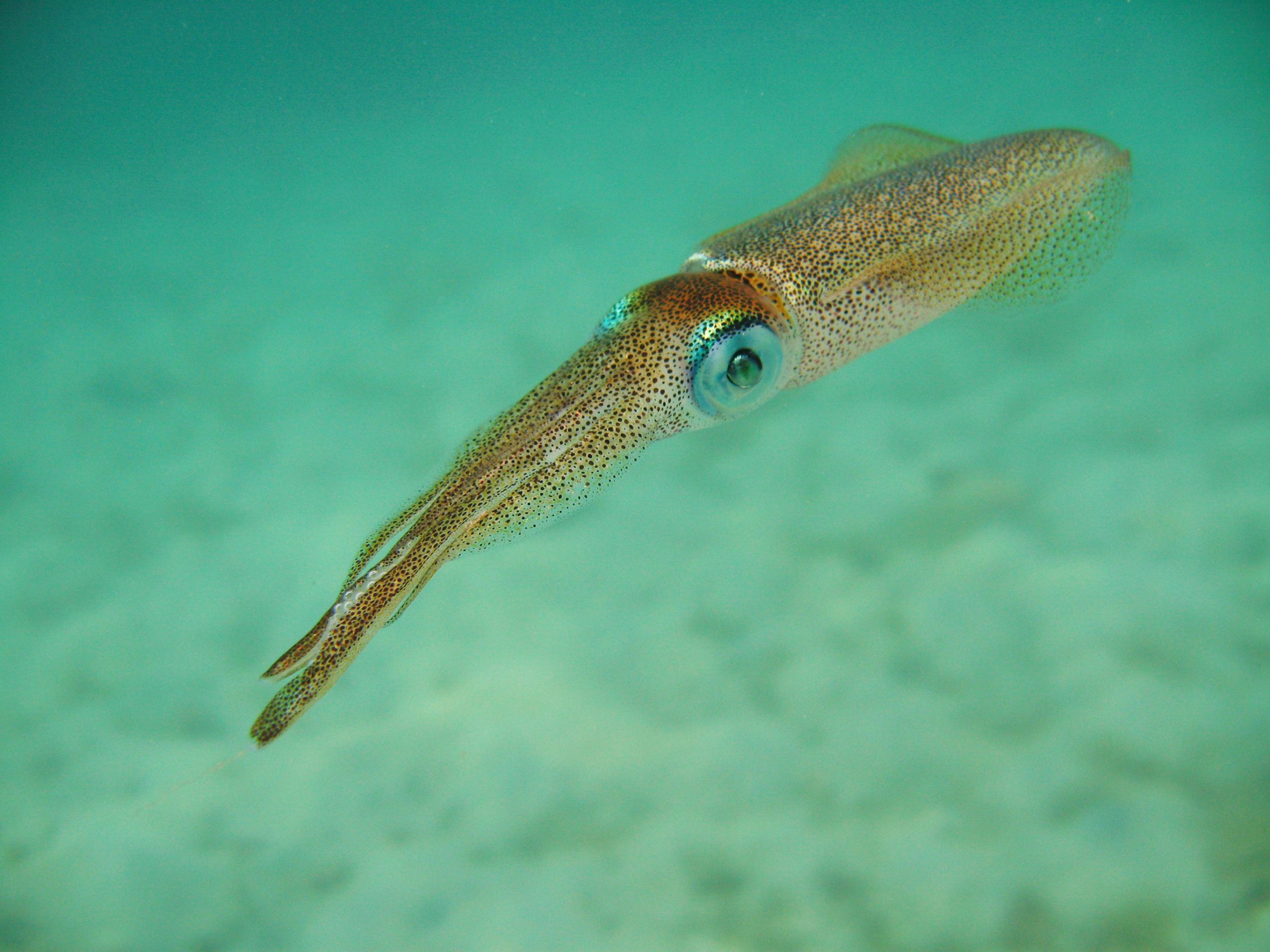 Even though the giant squid and the colossal squid are the largest invertebrates recorded on Earth (seemingly up to 18m in length and 900 kg), little is known about them, except from carcasses washed ashore or hauled aboard fishing ships.
Even though the giant squid and the colossal squid are the largest invertebrates recorded on Earth (seemingly up to 18m in length and 900 kg), little is known about them, except from carcasses washed ashore or hauled aboard fishing ships.
Their deep-sea habitat has kept them protected so far from the incursions of scientists and trophy-hunters.
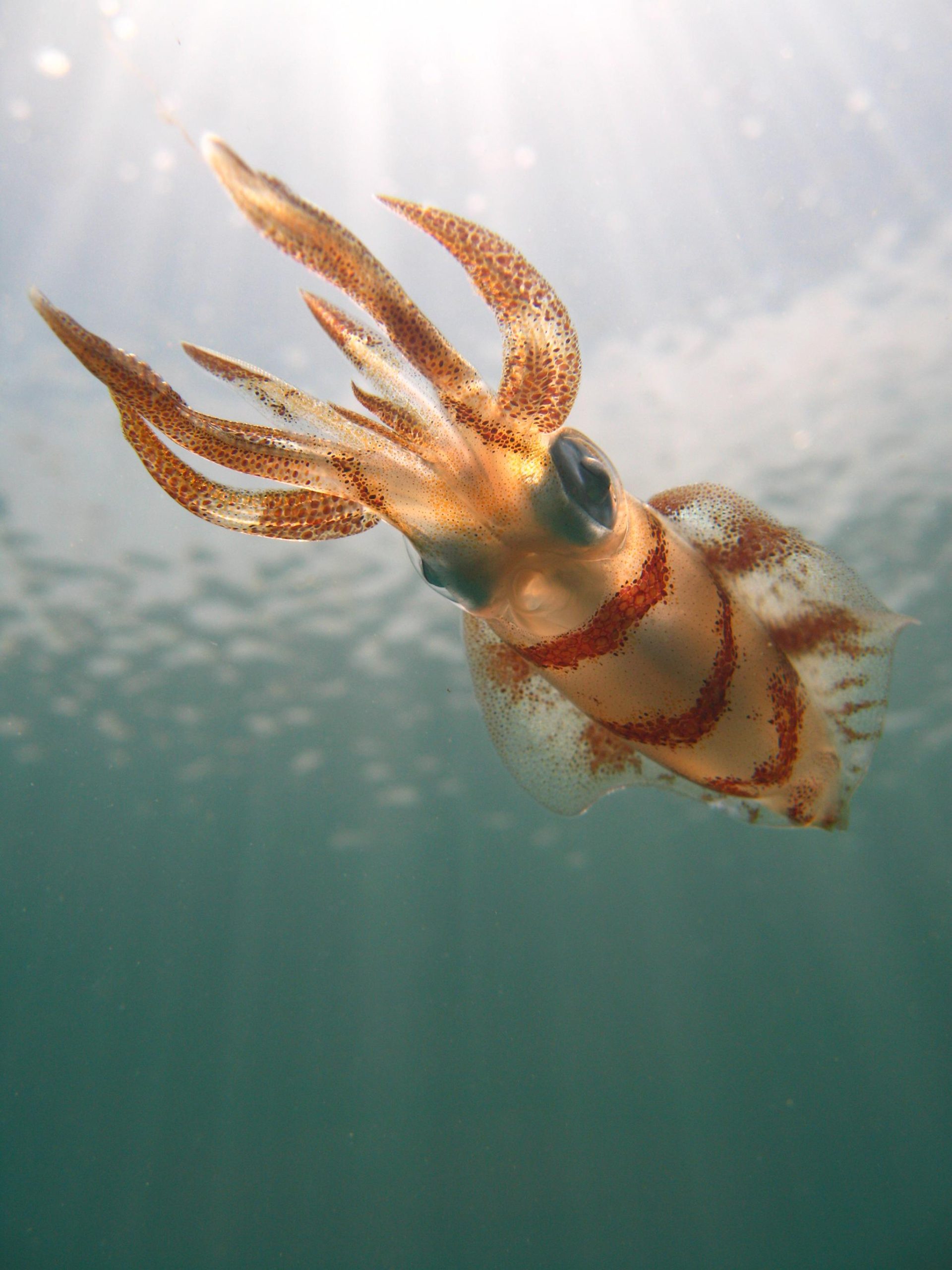 If not actually ‘seeing’ with its enormous eyes, the squid can ‘sense’ the movement of both predators and prey – and react appropriately.
If not actually ‘seeing’ with its enormous eyes, the squid can ‘sense’ the movement of both predators and prey – and react appropriately.
Smaller species of squid (like these photos) are much easier to observe, and they still have all the attributes of their larger cousins. Squids are cephalopods (as are cuttlefish and octopuses), and have a distinct head (with two large eyes), eight arms with suckers and two, usually longer, feeding tentacles.
These tentacles catch the prey, which is then held by the eight arms and bitten into pieces by the parrot-like beak. The oesophagus moves through the brain, hence the need for easily-digested food.
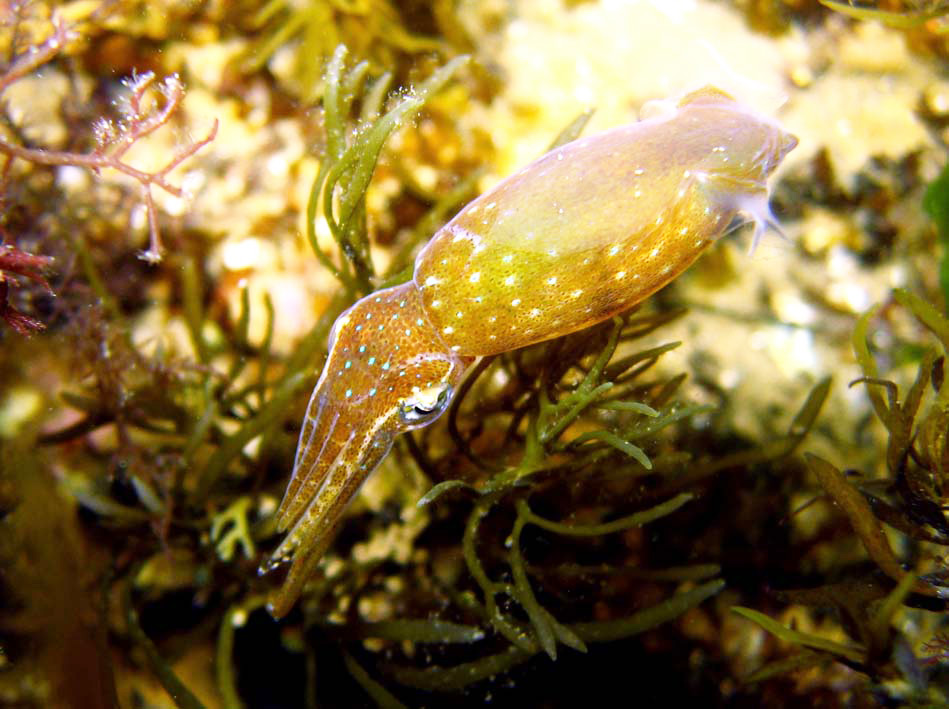
They also have three hearts, they breathe using gills, can change colour at will and disable/confuse predators by squirting ink – their very own type of personal protection spray.
They have a long, cylindrical body which is enclosed in a mantle which can change colour due to the presence of chromatophores.
By sucking water into the mantle cavity and expelling it in a fast, strong jet, squid move by jet propulsion!
And the difference between calamari and squid? Squid have small, pointed flaps/wings at their narrow end, whereas calamari squid have longer, triangular flaps which run the full length of their bodies.
(Thanks to David Donnelly, Jason Caruso and John Gaskell for these images).
Join our ‘i sea, i care’ Communities – help our marine environment and our living marine treasures. It’s easy; click and tick – and tell your friends!

